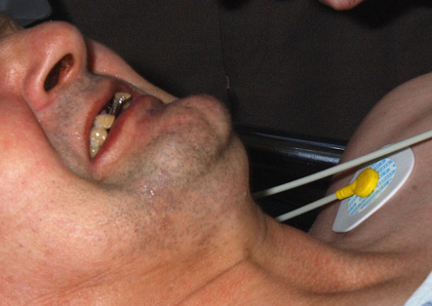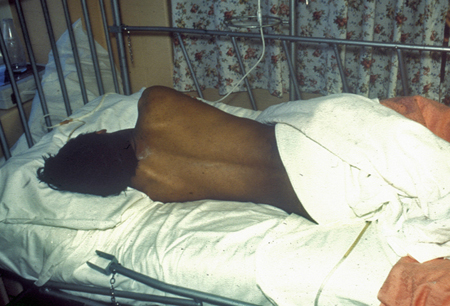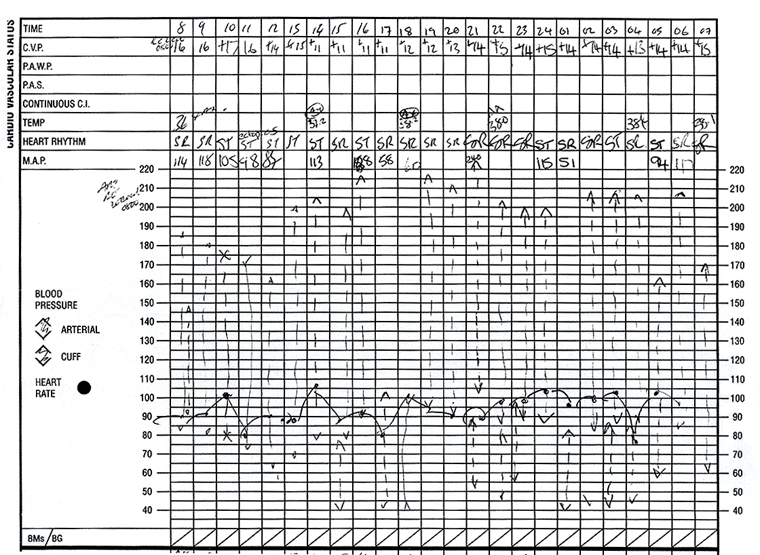History and exam
Key diagnostic factors
common
antecedent tetanus-prone injury
Tetanus-prone wounds include: wounds/burns requiring surgical intervention that is delayed for over 6 hours; wounds/burns with extensive devitalised tissue; puncture-type injuries; certain animal bites and scratches; wounds containing foreign bodies or in contact with soil or manure; compound fractures; wounds or burns in patients with systemic sepsis.[3][4]
tetanus immunisation status
Of patients diagnosed with tetanus in England and Wales between 1984 and 2000, 63% of those whose immunisation status was known had never been immunised.[41] Incomplete immunisation is more likely in older people and immigrant populations.
trismus (lock jaw)
The presenting symptom in more than 75% of cases. Present in 96% of patients on admission to the Tetanus Unit at the Centre for Tropical Diseases, Ho Chi Minh City, Vietnam, in a study of 500 consecutive non-neonatal patients with tetanus.[19] Trismus arises due to spasm of the masseter muscle and results in a grimace described as 'risus sardonicus' (sardonic smile). [Figure caption and citation for the preceding image starts]: TrismusFrom the collections of Nicholas J. Beeching and Christopher M. Parry [Citation ends]. [Figure caption and citation for the preceding image starts]: TrismusFrom the collections of Nicholas J. Beeching and Christopher M. Parry [Citation ends].
[Figure caption and citation for the preceding image starts]: TrismusFrom the collections of Nicholas J. Beeching and Christopher M. Parry [Citation ends].
back pain
Present in 94% of patients on admission to the Tetanus Unit at the Centre for Tropical Diseases, Ho Chi Minh City, Vietnam, in a study of 500 consecutive non-neonatal patients with tetanus.[19]
muscle stiffness/increased tone
Present in 94% of patients on admission to the Tetanus Unit at the Centre for Tropical Diseases, Ho Chi Minh City, Vietnam, in a study of 500 consecutive non-neonatal patients with tetanus.[19]
dysphagia
Present in 83% of patients on admission to the Tetanus Unit at the Centre for Tropical Diseases, Ho Chi Minh City, Vietnam, in a study of 500 consecutive non-neonatal patients with tetanus.[19]
spasms
Spasms are very painful and can affect any of the voluntary muscles. As the illness progresses, more muscle groups are affected. Contraction of the paraspinal muscles can result in severe opisthotonus and in infants the soles of the feet may touch the head.[1] Spasms can cause fractures of the vertebrae or other bones and haemorrhage into muscles. Spasms were present in 41% of patients on admission to the Tetanus Unit at the Centre for Tropical Diseases, Ho Chi Minh City, Vietnam, in a study of 500 consecutive non-neonatal patients with tetanus.[19][Figure caption and citation for the preceding image starts]: OpisthotonusFrom the collections of Nicholas J. Beeching and Christopher M. Parry [Citation ends].
Other diagnostic factors
common
people who inject drugs
An 'outbreak' of 25 cases of tetanus occurred in people who inject drugs in the UK between July 2003 and September 2004.[6] Skin popping and intramuscular injection were associated with increased risk.
respiratory distress
Apnoea is common due to laryngeal or pharyngeal spasms and/or vice-like contraction of the thoracic muscles. Increased intra-abdominal pressure during spasms further contributes to respiratory distress, and dysphagia increases the risk of aspiration. Respiratory difficulties were present in 10% of patients on admission to the Tetanus Unit at the Centre for Tropical Diseases, Ho Chi Minh City, Vietnam, in a study of 500 consecutive non-neonatal patients with tetanus.[19]
labile blood pressure, pulse rate, and temperature
Autonomic dysfunction is manifest early as irritability, restlessness, sweating, and tachycardia. In the second week of illness in those with severe tetanus profuse sweating, cardiac arrhythmias, labile hypertension or hypotension, and fever are commonly present. Fluctuations may be extreme and life-threatening. Sudden cardiac arrest can occur.[19][Figure caption and citation for the preceding image starts]: Observation chart illustrating autonomic dysfunction with extreme fluctuation in blood pressureFrom the collections of Nicholas J. Beeching and Christopher M. Parry [Citation ends].
uncommon
sweating
Present in 10% of patients on admission to the Tetanus Unit at the Centre for Tropical Diseases, Ho Chi Minh City, Vietnam, in a study of 500 consecutive non-neonatal patients with tetanus.[19]
Risk factors
strong
incomplete tetanus immunisation
Older people are less likely to have received complete immunisation, and there is a hypothesis that protective antibody levels decline over time.[21] People from developing countries or from areas where public health infrastructure has collapsed due to war or natural disaster are also less likely to be immunised.
The COVID-19 pandemic had a significant impact on global childhood immunisation programmes, leading to millions of children missing vaccine doses. The World Health Organization (WHO) and United Nations International Children's Emergency Fund (UNICEF) estimate in a 2023 Centers for Disease Control and Prevention (CDC) report that during 2021 and 2022, Diphtheria-Tetanus-Pertussis-Containing Vaccines1 (DTPcv1) and DTPcv3 uptake improved in all WHO regions except in Africa, where coverage stagnated at 80% and 72%, respectively, and remained below the 2019 coverage (83% and 77%, respectively).[18]
injury
Penetrating injuries on the lower limbs and compound fractures are particularly prone to tetanus.
aseptic obstetric practices
Uterine clostridial infection may follow septic abortions or occur postnatal. Maternal tetanus is defined as tetanus during pregnancy or within 6 weeks of the end of pregnancy (due to birth, miscarriage, or abortion) and has been associated with increased mortality compared with other types of adult tetanus.[2] Tetanus following abortion carries a particularly high risk of mortality, perhaps because women delay seeking medical attention.[22]
Umbilical stump infection may occur in the offspring of inadequately immunised mothers, resulting in neonatal tetanus. Birth practices involving umbilical anointment with mud, animal faeces, or ghee contribute to the risk of tetanus in some cases. Prevention of maternal and neonatal tetanus is achieved using a combination of immunisation of pregnant women, and improvement in birth hygiene and perinatal care.[16]
people who inject drugs
Injecting drug use may be strongly implicated in case clusters. Tetanus is particularly associated with intramuscular or subcutaneous use.[6] Drug practices that are less tetanus-prone can be encouraged, such as avoiding intramuscular and subcutaneous injection and using as little citric acid as possible, which devitalises tissue.[23]
asterile intramuscular injection
Intramuscular injection of quinine in particular is associated with a high mortality.[24] The acidic pH causes tissue ischaemia and creates an ideal milieu for clostridial multiplication.
weak
abdominal surgery
Necrotic infections involving bowel flora may complicate abdominal surgery. Rare cases may be caused by asterile surgical catgut or contaminated theatre ventilation systems.
acupuncture, ear piercing, pedicures, toothpicks
necrotic tumours
Necrotic tumours are weakly associated with tetanus.[12]
middle ear infection
'Otogenic tetanus' has been attributed to poor hygiene and negligence in treating middle ear infections.[25]
Use of this content is subject to our disclaimer